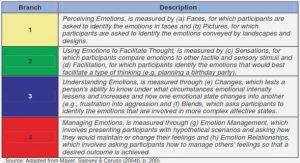Get Complete Project Material File(s) Now! »
Theories with unquenched flavor degrees of freedom
We just saw that in the ’t Hooft limit we can neglect the backreaction of the branes in the background geometry; one way of going beyond the probe approximation is to consider the Veneziano limit [Veneziano, 1976] for the field theory which is defined as: Nf → ∞ Nf Nc = fixed . (1.81).
In this limit the D7-brane action is no longer negligible compared to the D3-brane action; this approximation is the so called unquenched approximation. We have therefore to find a solution of the full action of the coupled D3/D7 system including the supergravity action in the AdS background and the DBI action describing the flavor branes: S = Sb + Sfl.
Classical and supersymmetric hydrodynamics
Hydrodynamics [Forster, 1990] is a theory describing a system at long wavelengths compared to the microscopic degrees of freedom, or in other words it describes a system where the scale L of variations away from equilibrium is much larger than the mean free path ℓmfp L ≫ ℓmfp .
The system is in local thermal equilibrium and we can describe it in terms of the temperature T (x) and the local fluid velocity uμ(x) which both depend on the coordinates. The velocity obeys the constraint uμuμ = −1. We can think of the system as being composed of patches of characteristic length L which are in local thermal equilibrium and allow the thermodynamic properties to vary across different patches. A system in equilibrium at finite temperature is characterized by the density operator ρ = 1 Z eβuμPμ.
Transport coefficients in AdS/CFT
In this section we discuss some applications of the correspondence to the calculation of transport coefficients which has been a very active subject of research during the last decade. Various transport phenomena have been studied using the correspondence such as charge diffusion and viscosity and their properties have been unraveled. In particular it has been proven that the ratio of shear viscosity and entropy density is universal, i.e. it has the same value for every system that can be described by a gravity dual. The study of hydrodynamic properties using the AdS/CFT was initiated in [Policastro et al., 2001, Policastro et al., 2002a, Policastro et al., 2002b]. Here we concentrate on the shear viscosity and in the rest of the chapter we present in detail the computation of the diffusion constant of the phonino.
We will now present following the presentation in [Policastro et al., 2002a] the computation of the correlator of the transverse component of the energy momentum tensor in the finite temperature background (1.56) whose metric we recall here 1.
Universality of the shear viscosity to entropy ratio
Here we present the proof of the universality [Buchel and Liu, 2004] of the shear viscosity ratio using the membrane paradigm. The membrane paradigm [Thorne et al., 1986, Parikh and Wilczek, 1998] was developed in the context of black hole physics. Consider an observer sitting just outside the horizon of a black hole. Then the effective action that will describe the physics of this observer will be given by: Seff = Sout + Ssurf . (2.53).
The Sout stands for the usual action outside of the horizon and the term Ssurf is a surface term that encodes the effect of the horizon on the space outside the black hole. To illustrate this approach with an example consider a scalar field a background with metric: ds2 = −gttdt2 + grrdr2 + gijdxidxj .
Table of contents :
Introduction
1 Elements of the AdS/CFT correspondence
1.1 Superconformal field theories
1.1.1 N = 4 SYM
1.2 String theory and supergravity
1.3 Statement of the correspondence
1.3.1 Computing correlators
1.4 Generalizations of the correspondence
1.4.1 Finite temperature
1.4.2 Finite density
1.4.3 Flavor degrees of freedom
1.5 Theories with unquenched flavor degrees of freedom
2 Holographic hydrodynamics
2.1 Classical and supersymmetric hydrodynamics
2.2 Response theory and Kubo formulas
2.3 Transport coefficients in AdS/CFT
2.3.1 Universality of the shear viscosity to entropy ratio
2.4 The supercurrent correlator in supergravity
2.5 Supercharge diffusion at finite temperature
2.5.1 Running of the correlator
2.6 Supercharge diffusion at finite density
2.6.1 The background
2.6.2 Analytic solution for small charge
2.6.3 Numerical Solution
3 Holographic entanglement entropy
3.1 Entanglement entropy in field theory
3.1.1 Mass corrections in the waveguide geometry
3.2 The holographic prescription
3.2.1 Review of the pure AdS case
3.3 Corrections from massive flavor degrees of freedom
3.3.1 The slab case
3.3.2 The ball case
Conclusions and perspectives
A Gamma matrix conventions
B Normalization of the boundary action
C Résumé détaillé (en français)
C.1 Introduction
C.2 Elements de la correspondance AdS/CFT
C.3 Hydrodynamique holographique
C.4 Entropie d’intrication holographique
C.5 Conclusions et perspectives
Bibliography






